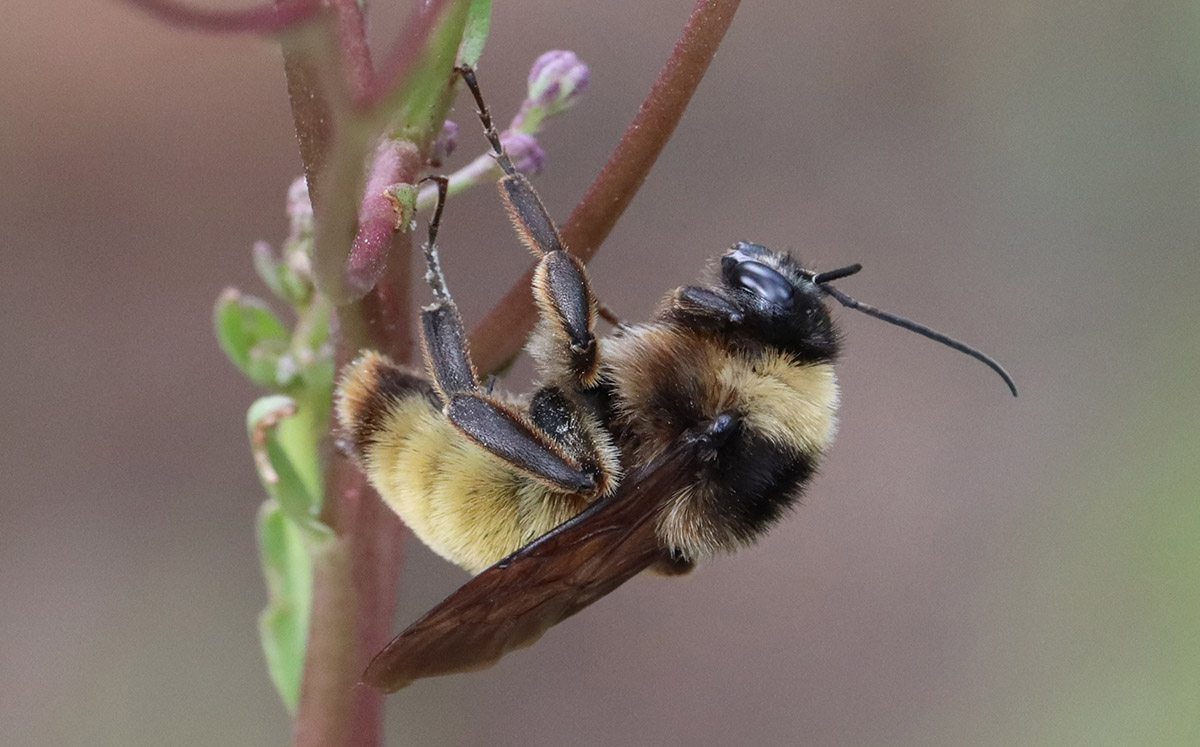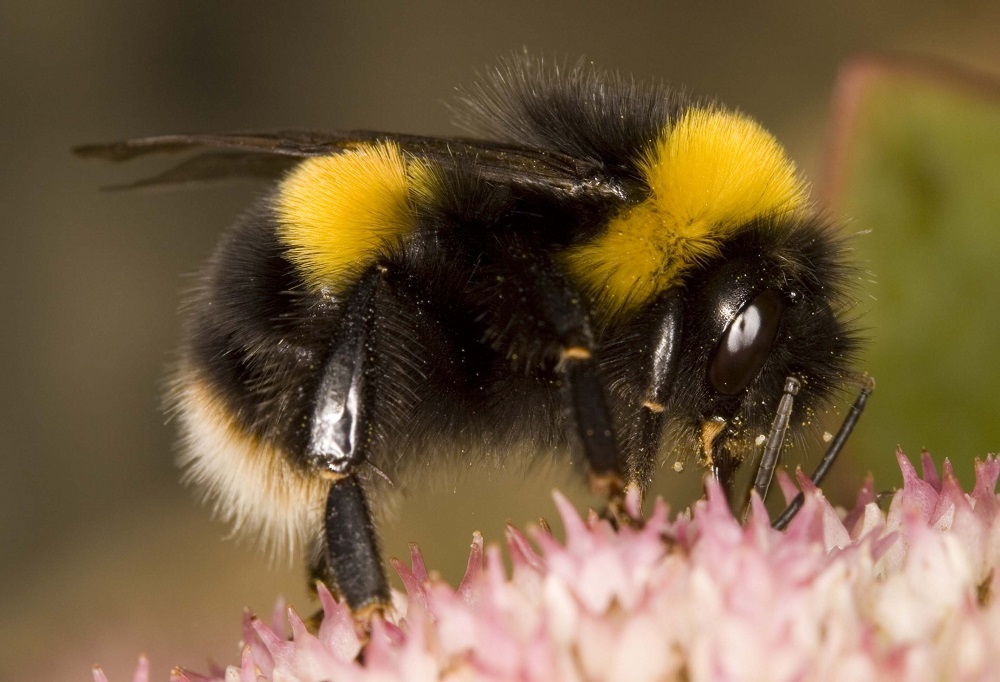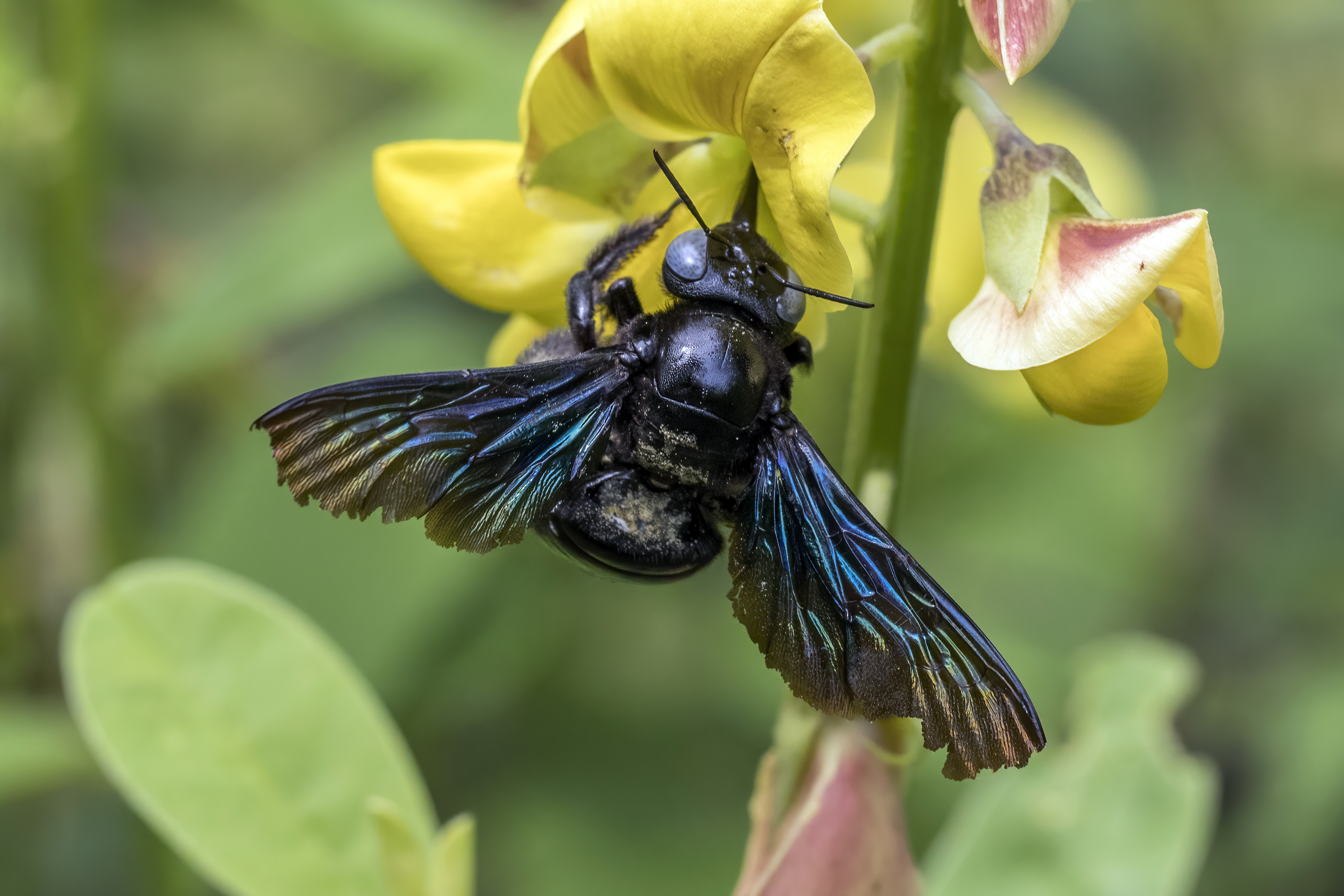Florida is home to an abundance of diverse bees, with over 300 species found in the state. These buzzing creatures play a crucial role in pollinating crops and wildflowers while also producing honey and wax. However, they can be bothersome when they swarm.
Understanding the behaviors and habitats of these bees can help us appreciate their importance in our ecosystem and take appropriate measures to coexist with them.
You are reading: 5 Types Of Bees In Florida And Where They Swarm

5 Types Of Bees In Florida And Where They Swarm
Western Honeybees (Apis Mellifera)

The Western honey bee (Apis mellifera) is the most common species of honey bee worldwide, including in Florida. This bee is native to Europe, western Asia, and Africa, but it has been introduced to various continents, including North America.
In Florida, Western honey bees are not native, but they have been established through human introduction.
Characteristics of Western Honey Bees:
– Appearance: Western honey bees are typically red/brown with black bands and orange-yellow rings on their abdomen. They have hair on their thorax and less hair on their abdomen. They also have a pollen basket on their hind legs, which is used for collecting and transporting pollen.
– Behavior: These bees are eusocial insects, living in colonies that contain one reproductive female (the queen) and her offspring. The workers, which are sterile female bees, perform all the work in the colony and are the most numerous caste. Males and queens focus on reproduction.
– Diet: Western honey bees feed on pollen and nectar collected from blooming flowers. They also consume honey (stored, concentrated nectar) and secretions produced by other members of their colony. Workers forage for food (nectar and pollen) for the entire colony.
– Importance: Western honey bees are essential pollinators for both economically significant crops and native plants. They are also the primary species maintained by beekeepers for honey production and pollination activities.
– Threats: Western honey bees face various threats, including pests, diseases, and colony collapse disorder. The varroa mite is a particularly damaging pest for these bees.
Bumblebees (Bombus)

Bumblebees (Bombus) are a genus of bees that belong to the family Apidae, which also includes honey bees, carpenter bees, and other bee species. There are over 250 species of bumblebees worldwide, with approximately 50 species found in North America.
Bumblebees are important pollinators of crops and native plants, and they are known for their fuzzy or hairy appearance, black and yellow (sometimes orange) coloration, and banded pattern.
Here are some characteristics of bumblebees:
– Behavior: Bumblebees are social bees, living in organized groups that contain a queen, drones (males), and workers. Each nest has overlapping generations, usually with multiple broods throughout the spring, summer, and fall. However, unlike honey bees, the bumblebee colony has an annual life cycle. At the end of the summer, the foundress queen, her workers, and male offspring will all die.
– Diet: Bumblebees feed on nectar and pollen collected from blooming flowers. They are generalist foragers, meaning they do not depend on any one flower type. However, some plants do rely on bumblebees to achieve pollination.
– Importance: Bumblebees are important pollinators of wild flowering plants and crops. Loss of bumblebees can have far-ranging ecological impacts due to their role as pollinators.
– Identification: Bumblebees can be identified by their fuzzy or hairy appearance, black and yellow (sometimes orange) coloration, and banded pattern. It is easiest to start identifying a bumblebee by its tail color, followed by the number of bands on its body.
Bumblebees are generally not aggressive unless provoked, and they play a crucial role in pollinating crops and wildflowers. It’s important to take measures to protect and conserve these important pollinators.
Carpenter Bees (Xylocopa)

Carpenter bees (Xylocopa) are a genus of bees in the subfamily Xylocopinae, with approximately 500 species in 31 subgenera. They are known for their nesting behavior, as nearly all species burrow into hard plant material such as dead wood or bamboo.
The main exceptions are species in the subgenus Proxylocopa, which dig nesting tunnels in suitable soil. Carpenter bees are found in various ecosystems, ranging from tropical to subtropical to temperate regions.
Read more : Learn About All Of The Major Deer Species
In the United States, they can be found across the southern states from Arizona to Florida and in the eastern states, north to New York.
Some key characteristics and behaviors of carpenter bees include:
– Size: Along with bumblebee queens, carpenter bees are the largest native bees in the United States.
– Lifespan: Carpenter bees can live up to three years, and there can be one or two generations per year.
– Social Structure: While some observations suggest that carpenter bees may exhibit primitive social behavior, they do not have queen or worker castes like honey bees and bumble bees.
– Foraging: Carpenter bees are generalist foragers and can be found in vegetable and flower gardens, where they feed on various plant species. They are early morning foragers and use their powerful thoracic muscles to sonicate dry pollen grains out of flower anthers, a process known as “buzz pollination”.
– Pollination: Carpenter bees are excellent pollinators of crops such as eggplant and tomato, as well as other vegetables and flowering plants.
– Nesting Habits: Female carpenter bees chew perfectly round holes into exterior wood surfaces to create their nests, which can cause damage to wooden structures over time. They are attracted to exposed, non-painted wood, nail holes, and saw cuts. Painting wood with oil or polyurethane-based paints can help deter them.
Sweat Bees (Halictidae)
Sweat bees, also known as Halictidae, are a diverse group of bees that belong to the second-largest family of bees, with nearly 4,500 species. They are found on every continent except Antarctica and are known for their attraction to perspiration, which offers them precious moisture and salts.
Some key characteristics and behaviors of sweat bees include:
– Size: Sweat bees are generally small, with lengths ranging from ¼ to ¾ inch.
– Appearance: They can vary greatly in appearance, with some species being black or brown and others being brightly colored.
– Habitat: Sweat bees occupy a great variety of habitats, including fields, gardens, grasslands, roadsides, and other open places where flowers are abundant.
– Nesting: Nearly all sweat bees nest in the ground, while a few species nest in rotten wood.
– Foraging: Adults are usually seen foraging for pollen and nectar among flowers, and they are important pollinators in various ecosystems.
– Social Behavior: Halictidae display a diverse range of social behaviors, including solitary, communal, semi-social, and primitively eusocial. Some species may exhibit different behaviors depending on the time of year, geographic location, altitude, and other factors.
– Genera in Florida: In Florida, there are over 50 species of Halictidae, including the following eight generSphecodes, Lasioglossum, Nomia, Agapostemon, Augochloropsis, Augochlora, Augochlorella, and Halictus.
Leafcutter Bees (Megachilidae)
Leafcutter bees, also known as Megachilidae, are a family of mostly solitary bees found throughout the world, including North America and Florida. They are important native pollinators, known for their unique nesting and foraging behaviors.
Some key characteristics and behaviors of leafcutter bees include:
– Size: Leafcutter bees are small to medium-sized, with lengths ranging from ¼ to ¾ inch.
– Nesting: Females use cut leaves to construct nests in narrow cavities, mostly in rotting wood or other suitable materials. Each nest contains several cells, and each cell will produce one adult leafcutter bee.
– Pollen-carrying Structure: Leafcutter bees have a pollen-carrying structure called a scopa, which is located on the ventral surface of the abdomen, distinguishing them from other bee families.
– Foraging: They are efficient pollinators that cut circular pieces from leaves and petals to use as provisions for their offspring. Leafcutter bees are known to visit a wide variety of flowering plants for nectar and pollen.
– Genera in Florida: In Florida, there are approximately 63 species (plus five subspecies) of leafcutter bees within seven generAshmeadiella, Heriades, Hoplitis, Coelioxys, Lithurgus, Megachile, and Osmia.
FAQS
1. Why are bees important in Florida?
Bees play a crucial role in pollinating crops and wildflowers while also producing honey and wax. They are essential for maintaining healthy ecosystems and supporting agriculture.
2. What are the five types of bees found in Florida?
The five types of bees found in Florida are Western honeybees, bumblebees, carpenter bees, sweat bees, and leafcutter bees.
3. What is swarming behavior in bees?
Swarming is a natural behavior for bees to reproduce and expand their colonies. When a colony becomes too large for its current space, a new queen is produced, and the old queen and a portion of the workers leave the hive to find a new location to establish a new colony.
4. Are bees dangerous?
Bees are generally not aggressive unless provoked. However, some species can be more aggressive than others, and their stings can be painful or even life-threatening to individuals with allergies.
5. What should I do if I encounter a swarm of bees?
If you encounter a swarm of bees, it’s best to stay calm and keep a safe distance. Contact a local beekeeper or pest control professional for assistance in safely removing the swarm if necessary.
6. How can I help protect and conserve bees in Florida?
You can help protect and conserve bees in Florida by planting native plants, avoiding the use of pesticides, providing nesting sites, and supporting local beekeepers.
Source: https://petstutorial.com
Category: Animals










